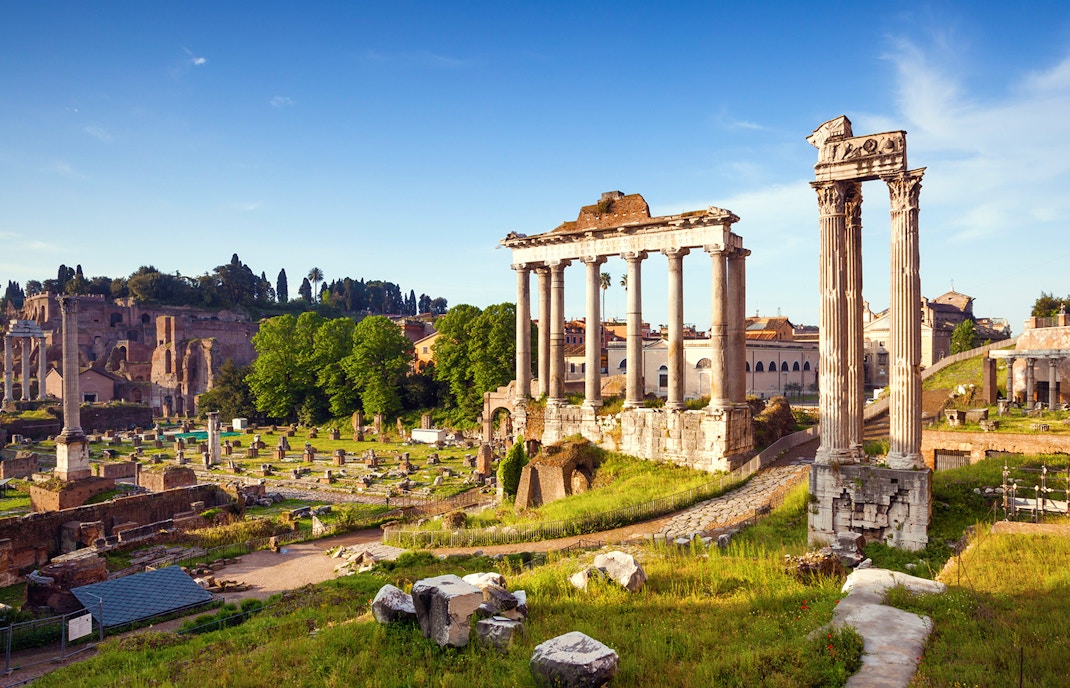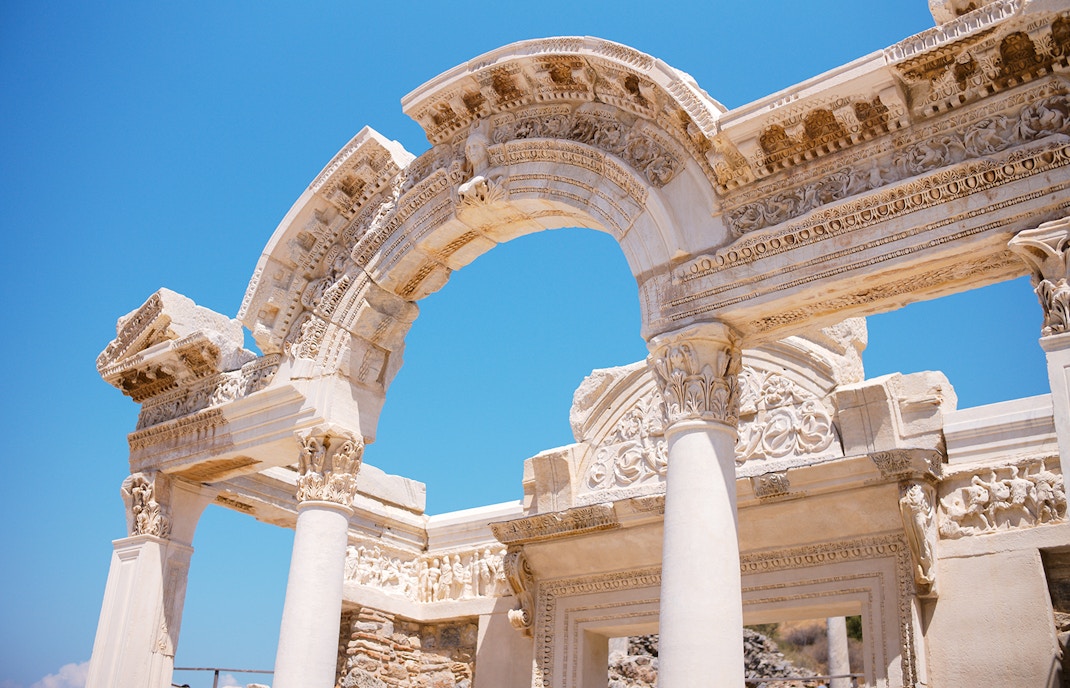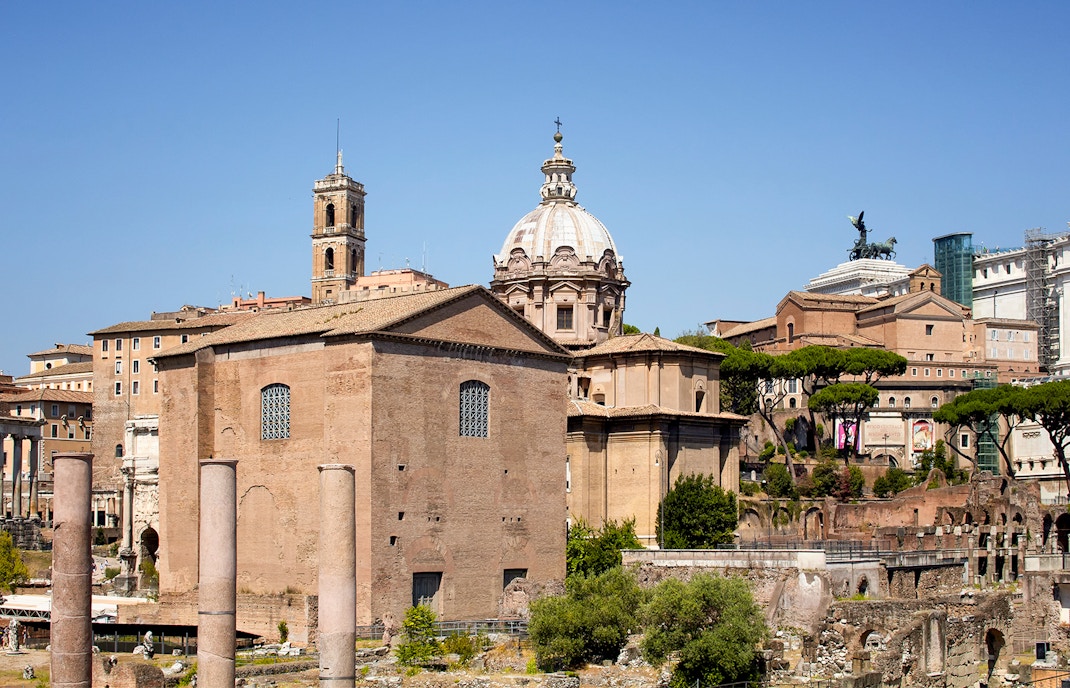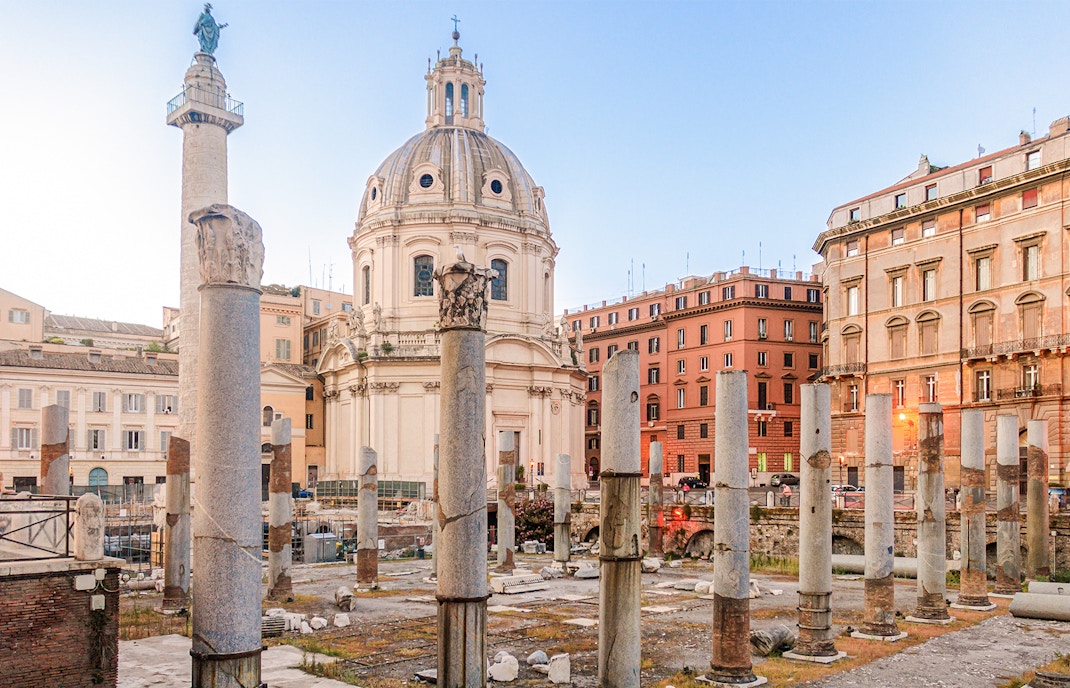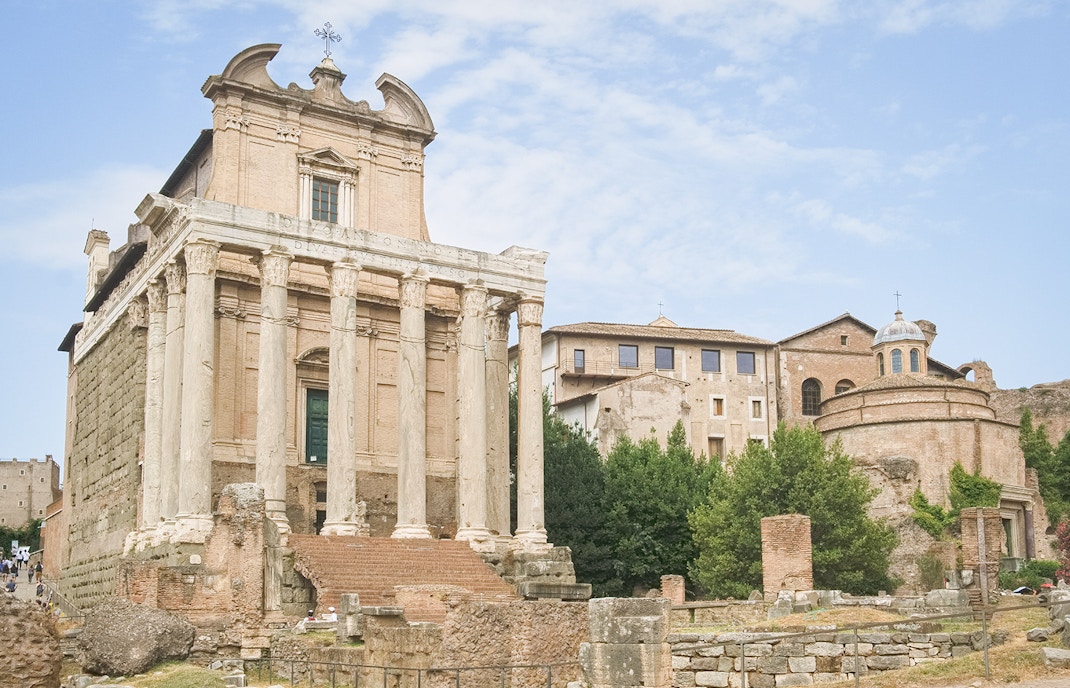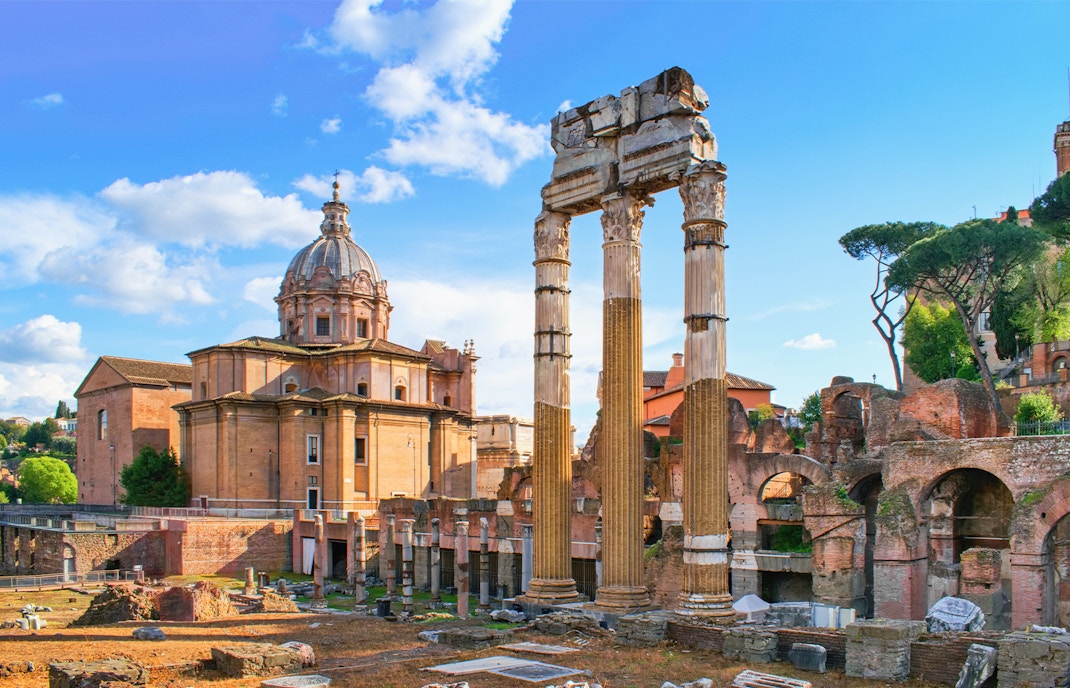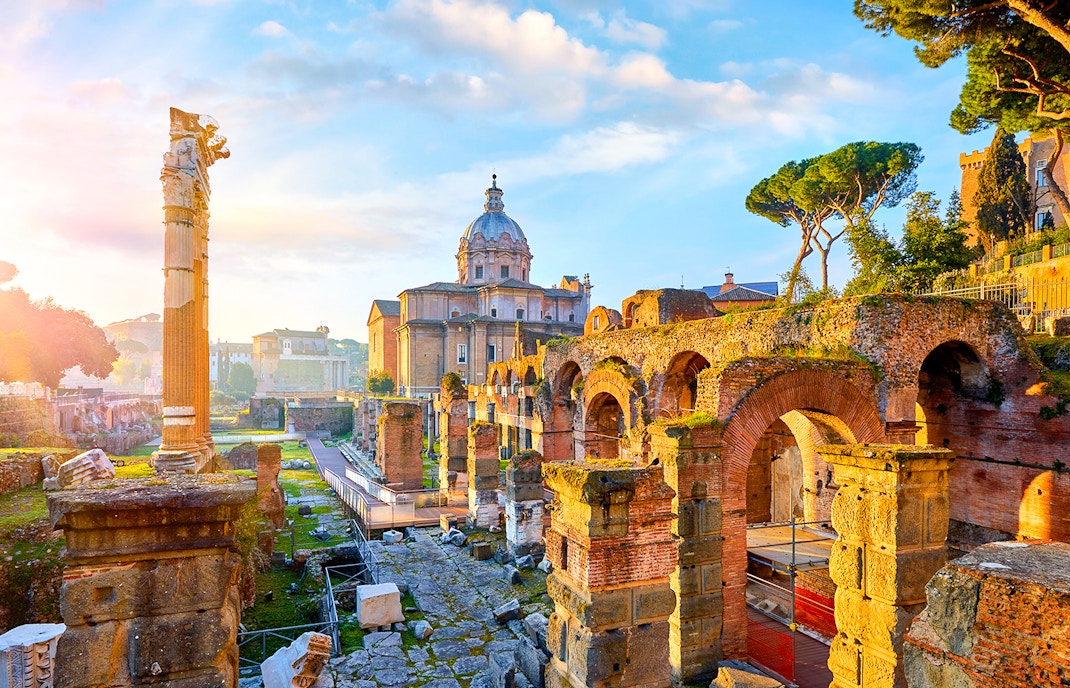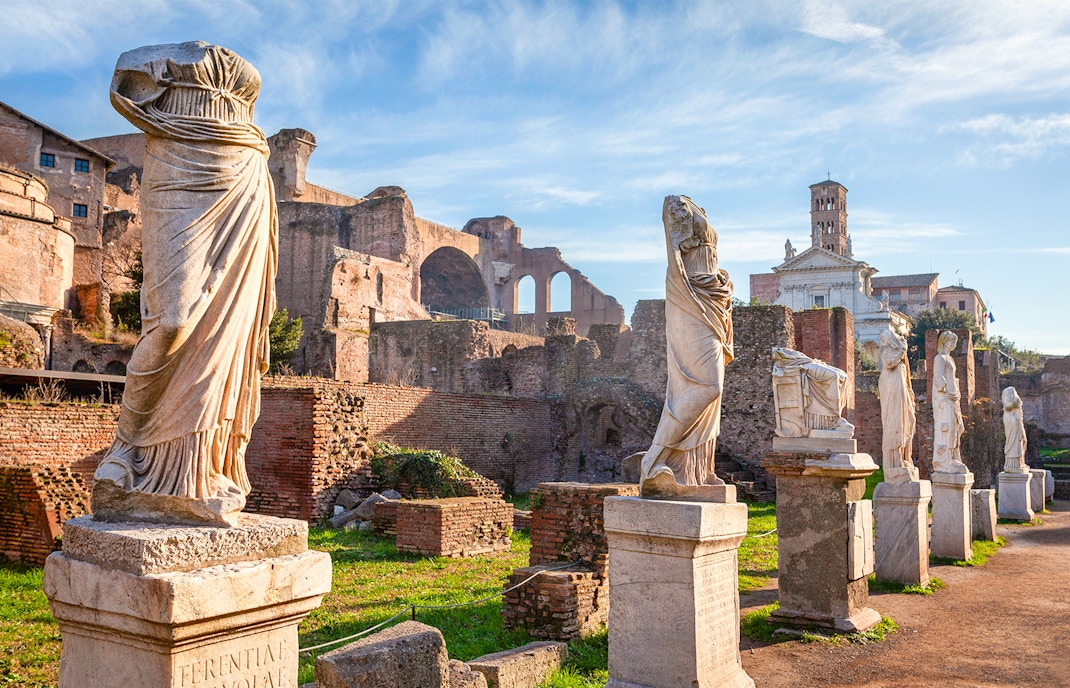Roman Forum Timeline
753 BC: According to Roman mythology, the city's founder Romulus marked the birth of Rome on Palatine Hill.
7th Century BC: The Forum evolved from a marshy valley into a bustling marketplace, laying the foundation for Roman life.
509 BC: The Roman Republic was established, and the Forum became a central arena for political debates and early democracy.
44 BC: The assassination of Julius Caesar in the Forum marked a pivotal moment, leading to Augustus' rise and the creation of the Roman Empire.
410 AD: As the Empire faced challenges, the Forum lost its political relevance and much of its power.
4th Century AD: Christianity's ascent saw temples repurposed into churches. Soon, the Roman Forum slowly devolved into ‘Campo vaccino’, or a cattle grazing ground.
15th and 16th Centuries: The Forum gradually fell into disuse and decay. Some of its stonework was also stolen or burned for its lime content.
19th and 20th Centuries: Excavations unearthed the Forum's buried treasures, revealing a glimpse into its illustrious past.
21st Century: From the late 20th century onwards, the Roman Forum grew in prominence as a major tourist attraction.
